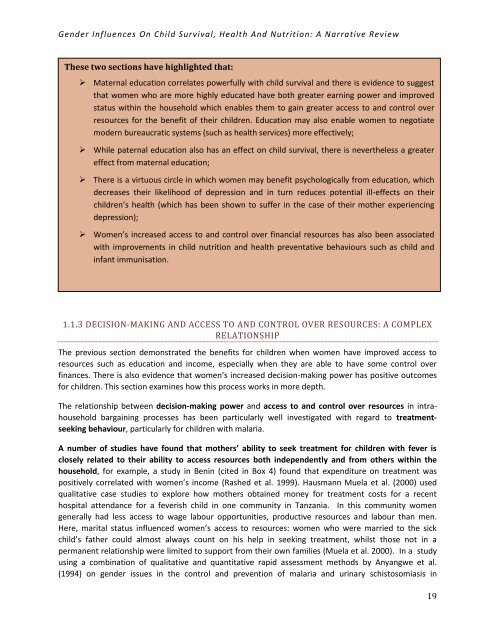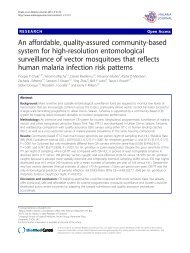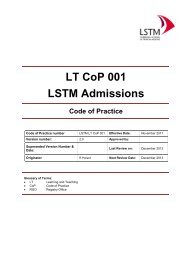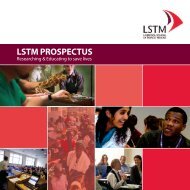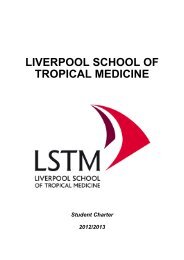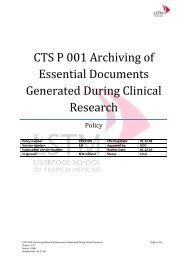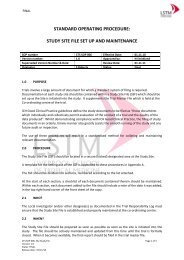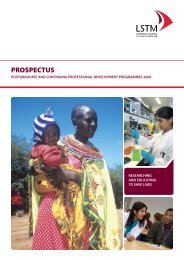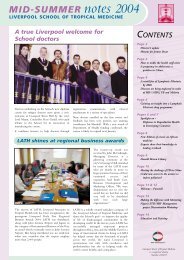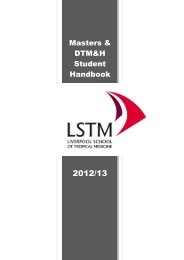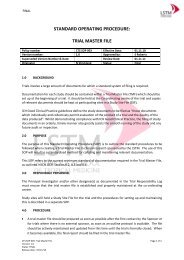Gender influences on child survival, health and nutrition: a ... - Unicef
Gender influences on child survival, health and nutrition: a ... - Unicef
Gender influences on child survival, health and nutrition: a ... - Unicef
You also want an ePaper? Increase the reach of your titles
YUMPU automatically turns print PDFs into web optimized ePapers that Google loves.
<str<strong>on</strong>g>Gender</str<strong>on</strong>g> Influences On Child Survival, Health And Nutriti<strong>on</strong>: A Narrative Review<br />
These two secti<strong>on</strong>s have highlighted that:<br />
‣ Maternal educati<strong>on</strong> correlates powerfully with <strong>child</strong> <strong>survival</strong> <strong>and</strong> there is evidence to suggest<br />
that women who are more highly educated have both greater earning power <strong>and</strong> improved<br />
status within the household which enables them to gain greater access to <strong>and</strong> c<strong>on</strong>trol over<br />
resources for the benefit of their <strong>child</strong>ren. Educati<strong>on</strong> may also enable women to negotiate<br />
modern bureaucratic systems (such as <strong>health</strong> services) more effectively;<br />
‣ While paternal educati<strong>on</strong> also has an effect <strong>on</strong> <strong>child</strong> <strong>survival</strong>, there is nevertheless a greater<br />
effect from maternal educati<strong>on</strong>;<br />
‣ There is a virtuous circle in which women may benefit psychologically from educati<strong>on</strong>, which<br />
decreases their likelihood of depressi<strong>on</strong> <strong>and</strong> in turn reduces potential ill-effects <strong>on</strong> their<br />
<strong>child</strong>ren’s <strong>health</strong> (which has been shown to suffer in the case of their mother experiencing<br />
depressi<strong>on</strong>);<br />
‣ Women’s increased access to <strong>and</strong> c<strong>on</strong>trol over financial resources has also been associated<br />
with improvements in <strong>child</strong> nutriti<strong>on</strong> <strong>and</strong> <strong>health</strong> preventative behaviours such as <strong>child</strong> <strong>and</strong><br />
infant immunisati<strong>on</strong>.<br />
1.1.3 DECISION-MAKING AND ACCESS TO AND CONTROL OVER RESOURCES: A COMPLEX<br />
RELATIONSHIP<br />
The previous secti<strong>on</strong> dem<strong>on</strong>strated the benefits for <strong>child</strong>ren when women have improved access to<br />
resources such as educati<strong>on</strong> <strong>and</strong> income, especially when they are able to have some c<strong>on</strong>trol over<br />
finances. There is also evidence that women’s increased decisi<strong>on</strong>-making power has positive outcomes<br />
for <strong>child</strong>ren. This secti<strong>on</strong> examines how this process works in more depth.<br />
The relati<strong>on</strong>ship between decisi<strong>on</strong>-making power <strong>and</strong> access to <strong>and</strong> c<strong>on</strong>trol over resources in intrahousehold<br />
bargaining processes has been particularly well investigated with regard to treatmentseeking<br />
behaviour, particularly for <strong>child</strong>ren with malaria.<br />
A number of studies have found that mothers’ ability to seek treatment for <strong>child</strong>ren with fever is<br />
closely related to their ability to access resources both independently <strong>and</strong> from others within the<br />
household, for example, a study in Benin (cited in Box 4) found that expenditure <strong>on</strong> treatment was<br />
positively correlated with women’s income (Rashed et al. 1999). Hausmann Muela et al. (2000) used<br />
qualitative case studies to explore how mothers obtained m<strong>on</strong>ey for treatment costs for a recent<br />
hospital attendance for a feverish <strong>child</strong> in <strong>on</strong>e community in Tanzania. In this community women<br />
generally had less access to wage labour opportunities, productive resources <strong>and</strong> labour than men.<br />
Here, marital status influenced women’s access to resources: women who were married to the sick<br />
<strong>child</strong>’s father could almost always count <strong>on</strong> his help in seeking treatment, whilst those not in a<br />
permanent relati<strong>on</strong>ship were limited to support from their own families (Muela et al. 2000). In a study<br />
using a combinati<strong>on</strong> of qualitative <strong>and</strong> quantitative rapid assessment methods by Anyangwe et al.<br />
(1994) <strong>on</strong> gender issues in the c<strong>on</strong>trol <strong>and</strong> preventi<strong>on</strong> of malaria <strong>and</strong> urinary schistosomiasis in<br />
19


